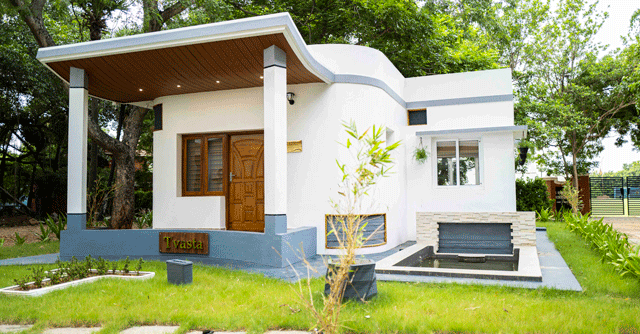
Indian firms are turning to 3D printing to build houses for individuals, businesses


In April, Chennai-based 3D printing startup Tvasta Construction showcased a one-storey 3D printed house with a built-up area of 600 square feet at the Indian Institute of Technology, Madras (IIT-M) where it was incubated five years ago.
The structure was built with financial support from Habitat for Humanity, a global organization working on solving the housing problem.
Tvasta Construction built its first concrete structure using a 3D printer in 2018 for a program of the Ministry of Urban Development. When it started out to build a 500 square feet house, the project took 21 days to construct. “We are trying to construct a 500 sq feet house in under a week,” said Vidyashankar C, co-founder and chief operating officer (COO) of Tvasta Construction, who raised Rs.3 crore from Habitat for Humanity in October.

A lot of 3D printed structures will come up across the southern parts of the country, according to Vidyashankar. His startup, however, is focusing only on construction for big building groups, and is currently building 5,000 to 6,000 square feet structures in Pondicherry for commercial use.
The use of 3D printers in India is coming of age. Its use is no longer limited to just building components for the automotive and aviation sector. During the peak pandemic months, they were used to build valves for ventilators and parts of face shields.
Experts believe 3D printing technology can also solve the housing shortage across the world, and in India, by building homes in a fraction of the time and money as compared to traditional construction. Also known as additive manufacturing, 3D printing is a process where three-dimensional objects are created from a digital representation by putting layer after layer of printing material. Typically, the material used in 3D printing is made of plastic or metal. A special type of concrete is used for housing projects.

For instance, among traditional construction companies, Larsen & Toubro Construction (L&T) has made some inroads with a couple of 3D printed houses. The construction major showcased a prototype of a two-storey house earlier this year at its Kanchipuram facility, using a large format 3D printer supplied by construction automation firm Cobod.
A 2020 report by the Indian Council for Research on International Economic Relations (ICRIER) showed that the housing shortage in urban India had grown by 54% to 29 million in 2018 from 18.78 million in 2012. By 2030, three billion people will need improved housing, which can be met by building 96,000 new homes every day, estimated the World Economic Forum.
3D printing can be used for constructing small buildings or facilities in rough terrain with minimum labor, according to Swapnil Sansare, founder of Divide by Zero Technologies, a Mumbai-based 3D printing company. Sansare has been in talks with some construction companies that wanted prototypes of 3D printers. Sansare concurred that construction companies can build houses much faster than traditional methods by using additive manufacturing.

3D printed houses offer many benefits, according to Vidyashankar. “Traditional construction faces a lot of challenges. Construction practices are outdated. 3D printing can make a big difference in terms of optimization and efficiency. It can open new designs and bring a paradigm shift from a user experience point of view,” he said.
Vidyashankar also explained that the cost of financing alone makes it lucrative to 3D print houses. It is likely to be more affordable because of the shapes and unique design that 3D printing allows as compared to conventional methods. “3D printed houses will be up to 30% cheaper than conventionally constructed houses,” he said. One factor that has helped Tvasta reduce costs is having complete control over the value chain. The startup has its manufacturing facility in Bengaluru and it builds everything in-house, including raw materials, printers, software, and processes.
That said, the technology deos have its limitations, and building large houses or multi-storeyed apartments for commercial use can be challenging.

“Building a multi-story building using 3d printing alone is not happening anytime soon. Some of the companies outside India that claim to have built multi-storeyed buildings have built a hybrid. They create a scaffold and have put the 3D Printed house on top of that. That scaffold is developed using traditional processes,” Sansare explained. But that doesn't mean the smaller houses built with 3D printers lack durability or are unsafe for habitation. According to Sansare, single-storey houses are durable and safe for living. To ensure its 3D printed houses are as structurally robust as a traditional house.
Vidyashankar said his company has followed all the protocols that exist for traditional houses. “The civil engineering department of IIT Madras has been very helpful in this regard. We are also working with the Central Building Research Institute (CBRI) and Structural Engineering Research Centre (CSIR) of Government of India to get all the approvals and certifications that are required,” he added.
For now, Tvasta will focus on building structures in Chennai, Bengaluru, and Hyderabad. However, it plans to build structures in Coorg and Kashmir next year to show that the technology works even in the toughest of terrains. Vidyashankar hopes his company will complete 25,000-30,000 square feet of construction next year and 1.5 lakh to 2 lakh square feet in the year after that.

